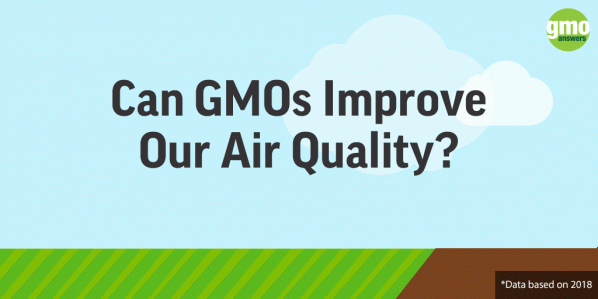Question
How are GMOs used in energy and fuel sources?
How are GMOs used in energy and fuel sources? Mainly, what are the cons for doing this, and where can I read more about it?
Submitted by: rebeccarichardss
Answer
Expert response from Alejandra Abril Guevara
Graduate Student, University of Florida
Thursday, 01/10/2015 15:25
Genetically engineered (GE) crops have been used to generate renewable fuels. Ethanol has been traditionally produced from starch feedstock (e.g corn) and biodiesel from vegetable oil feedstocks (e.g. soybean). Currently, the ‘second generation biofuels’ are being produced from cellulosic biomass for ethanol and eukaryotic microalgae for biodiesel. There is a growing interest for generation of novel fuels from prokaryotic microalgae metabolism from fatty-acids (Reviewed by [1]). GE corn contains the anti-insect BT protein + the enzyme that confers glyphosate resistance, and these have been used for the production of biofuels in the United States. Also, in 2009, 20.6% of the soybean production was utilized for biodiesel production [10]. Besides corn and soybean, there are no other GE crops used for biofuel production currently in the United States (out of eight GE products available in the US market). However, for several years, plant breeders and geneticist have been selecting and generating (modifying) plant varieties, which are economically more efficient for the production of ethanol and biodiesel. In order to improve the biomass conversion properties of plants, cell wall architecture, especially lignin content and/or composition can be modified. Lignin constitutes a physical barrier to cellulolytic enzymes used to convert cellulose to fermentable sugars [2,3]. Reduction in lignin concentration and changes in lignin composition in numerous species, has been positively correlated with higher glucose yields improving the ethanol production up to 50% [4–8].
The advantages of using GE crops for biofuel production are not very different that the advantages related to GE food crops. The faster and more accurate selection of desired traits save money and time to develop cultivars. Additionally, as seen in already GE crops, it economically benefits farmers, customers and the environment. Furthermore, research and innovation have been highly encouraged. Value-added products from waste materials form biomass processing (e.g. lignin) have been proposed as a means to make biofuels more competitive relative to fossil-fuel produced combustibles and chemicals. For example, researchers are using lignin waste derived from ethanol production as primary matter to generate lignin nanotubes (LNTs). DNA was observed to adsorb to LNTs, which at the same time have the ability to penetrate into the nucleus of human HeLa cells with lower cytotoxicity than carbon nanotubes. LNTs have become a big attractive in the medical field as a potential medical method for gene therapy [9].
On the other hand, one of the main disadvantages is the ethical perspective where, if viable and profitable, crops use for biofuels are prioritized over food. This might have consequences in food prices and food availability and security. But again, it would not be a disadvantage of the GE technology per se but a disadvantage originated from the profitability of biofuels related to food agricultural crops.
The area of biofuels still requires more research, but it is a fast-paced, moving field. Without doubt, sustainable biofuel production would benefit from implementation of GE technologies for the reasons I mentioned before. There is information available in all the documents I am citing in this text and also inside those references, you can find many more. Some can be very technical but there are also some very good reviews about the state of art in this field.
Of course, if you have questions I’m always glad to help answer them.
References
- Lu X: A perspective: photosynthetic production of fatty acid-based biofuels in genetically engineered cyanobacteria. Biotechnology Advances 2010, 28:742–746.
- Himmel ME, Ding S, Johnson DK, Adney WS, Mark R, Brady JW, Foust TD, Ding S: Biomass recalcitrance: engineering plants and enzymes for biofuels production. Scince 2007, 315:804–807.
- Visel A, Rubin EM, Pennacchio L a: Genomic views of distant-acting enhancers. Nature 2009, 461:199–205.
- Van Acker R, Vanholme R, Storme V, Mortimer JC, Dupree P, Boerjan W: Lignin biosynthesis perturbations affect secondary cell wall composition and saccharification yield in Arabidopsis thaliana. Biotechnology for biofuels 2013, 6:46.
- Saballos A, Vermerris W, Rivera L, Ejeta G: Allelic association, chemical characterization and saccharification properties of brown midrib mutants of sorghum (Sorghum bicolor (l.) moench). BioEnergy Research 2008, 1:193–204.
- Jung JH, Vermerris W, Gallo M, Fedenko JR, Erickson JE, Altpeter F: Rna interference suppression of lignin biosynthesis increases fermentable sugar yields for biofuel production from field-grown sugarcane. Plant biotechnology journal 2013, 11:709–16.
- Xu B, Escamilla-Treviño LL, Sathitsuksanoh N, Shen Z, Shen H, Zhang Y-HP, Dixon R a, Zhao B: Silencing of 4-coumarate:coenzyme a ligase in switchgrass leads to reduced lignin content and improved fermentable sugar yields for biofuel production. The New phytologist 2011, 192:611–25.
- Kavousi B, Daudi A, Cook CM, Joseleau J-P, Ruel K, Devoto A, Bolwell GP, Blee KA: Consequences of antisense down-regulation of a lignification-specific peroxidase on leaf and vascular tissue in tobacco lines demonstrating enhanced enzymic saccharification. Phytochemistry 2010, 71:531–42.
- Ten E, Ling C, Wang Y, Srivastava A, Dempere LA, Vermerris W: Lignin nanotubes as vehicles for gene delivery into human cells. Biomacromolecules 2014, 15:327–338.
- Biodiesel Magazine, (2008), 2009 Biodiesel Industry Directory, Fifth Edition
How Do GMOs Benefit The Environment?



